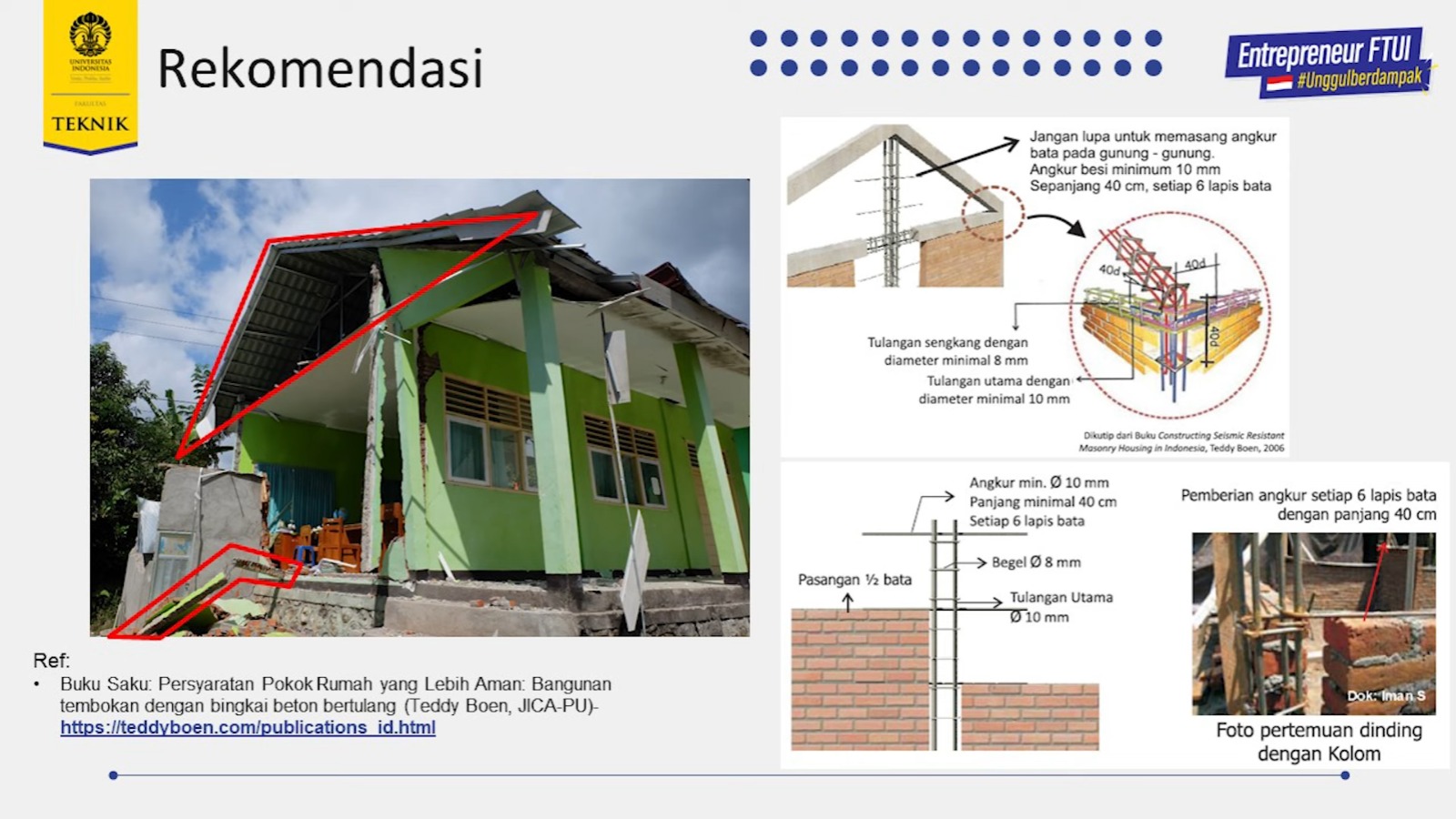The Meteorology, Climatology, and Geophysics Agency (BMKG) reported that in 2023, Indonesia experienced a total of 10,789 seismic activities, surpassing the annual average of 7,000 earthquakes. Out of these, 861 were felt by the public, with 24 causing significant damage, particularly to residential buildings.
“There is an expression that states it’s not the earthquake itself that is deadly, but the failure of building structures to withstand the seismic loads generated by earthquakes. Indonesia, frequently impacted by seismic activities, faces serious consequences such as structural damage, especially in housing,” said Dr. Dipl.-Ing. Nuraziz Handika, S.T., M.T., M.Sc., a lecturer in the Civil Engineering Department of the Faculty of Engineering (FT) at the University of Indonesia (UI).
He added that earthquakes not only induce physical vibrations in buildings but also reveal deficiencies in design and construction. These weaknesses not only compromise structural integrity but also increase the risk of fatal damage to buildings during earthquakes.
Using the example of the 2018 Lombok earthquake, Dr. Nuraziz Handika highlighted issues with reinforcement detailing and connections in buildings, which were major contributors to structural damage. According to him, the quality of building materials, reinforcement detailing, and connections in walls, columns, and beams are the main factors causing damage and collapse of public facilities, social facilities, residential homes, and other simple buildings during earthquakes.
“To make buildings earthquake-resistant, attention must be given to aspects such as connections, material selection and preparation before use, detailing of reinforcement work, anchoring walls to columns, detailing of beam-column reinforcement, and other factors to comply with standards. For example, the anchoring length between columns and slab beams should be at least 40 times its diameter,” Dr. Nuraziz said.
Dr. Nuraziz, who specializes in structural research on cracking phenomena and construction material damage at FTUI, revealed that the standards referred to are those issued by the Ministry of Public Works and People’s Housing (PUPR). Many posters have been created for easier implementation in the field, referencing these standards, which can be downloaded at https://teddyboen.com/publications_id.html.
To make it easier to understand, Dr. Nuraziz provided a calculation example regarding column and brick wall anchorage. He stated, “In this case, if the diameter of the reinforcement used is 10 mm, then the minimum anchorage length should be 40 cm to the right and left from the building corner. This anchorage is applied to every six layers of bricks. Subsequently, anchor bars are cast in the brick layers to connect columns with the walls, ensuring compliance with established standards.”
The same principle applies to connections on beams (roofs) and wall corners. Accurate anchorage is required on columns in the middle of walls connected to the roof truss and on columns meeting wall corners.
Dr. Nuraziz emphasized that to create earthquake-resistant buildings, several essential requirements need to be met, including good quality building materials, appropriate structural dimensions, strong connections of main structural elements, and good workmanship. “It is important to note that this work is not visible to the naked eye and will only be tested when an earthquake occurs. Therefore, adhere to the processes and standards in building construction to ensure our collective safety,” said Dr. Nuraziz, a Ph.D. graduate from the Institut National des Sciences Appliquées de Toulouse, France.
Meanwhile, on a separate occasion, FTUI Dean, Prof. Dr. Heri Hermansyah, ST., M.Eng., IPU, stated, “In facing the frequent threat of earthquakes in Indonesia, it is crucial to understand how the construction of the buildings we inhabit can provide optimal protection for their occupants. Applying earthquake-resistant construction principles, such as selecting suitable materials, strong structural connections, and designs that consider vulnerability to tremors, is key to protecting homes from potentially damaging impacts of earthquakes.”
***
Office of Public Communication
Faculty of Engineering Universitas Indonesia


